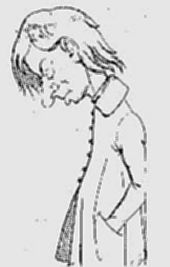Gustav Adolph Schlöffel
Gustav Adolph Schlöffel (* July 25, 1828 in Landeshut , Lower Silesia , † June 21, 1849 near Waghäusel near Karlsruhe ) was a revolutionary during the March Revolution of 1848/1849.
Life
Gustav Adolph Schlöffel was the son of the republican-minded factory owner and landowner Friedrich Wilhelm Schlöffel (1800–1870) in the Lower Silesian Hirschberg ( Giant Mountains ), later a well-known “leftist” in the Frankfurt pre-parliament and war commissioner for the Baden-Palatinate uprising .
Schlöffel first attended high school in Breslau . In 1846 he went to study philosophy at the University of Heidelberg , where in 1846 he joined the secret "Neckarbund", a fraternity movement.
Shortly afterwards he came to Berlin as a young student and was editor of the Berlin magazine Der Volksfreund during the unrest of 1848 . In the publication, the name of which is supposed to recall the L'Ami du Peuple edited by Jean Paul Marat during the French Revolution , he advocated a democratic constitution and for workers' rights. He quickly developed into the outstanding leader of the young labor movement, so that some Berliners even referred to him as "the soul of Janze" . Schlöffel was judged as gifted with great openness, fiery words and less gifted in economics .
On April 21, 1848, one day after the mass demonstration at the Berlin City Palace , Schlöffel was arrested as one of the main organizers and sentenced on May 10, 1848 for "attempted riot" to six months ' imprisonment, which he had to serve in the Magdeburg citadel . At the same time, the Heidelberg University revoked his "academic citizenship". The remaining issues of Volksfreund issue No. 5 were destroyed as ordered.
Three weeks before his imprisonment expired, he fled Magdeburg fortress and took part in the Reich constitution campaign in Baden. At this time he also had correspondence with Karl Marx . In a battle with Prussian soldiers on June 21, 1849 near Waghäusel, Schlöffel was killed by a cannonball.
Gustav Adolph Schlöffels last resting place is in the Heidelberg Bergfriedhof in the department R. His grave is adorned by a hewn granite block in which the life dates of the young revolutionary are stamped.
In Biel ( Canton Bern ) he is mentioned as one of the co-editors of the weekly newspaper Die Revolution .
And again 48 - the film
Directed by Gustav von Wangenheim (1895–1975), who had also written the screenplay with his wife Inge, the historical film And Again 48 , which dealt with the March Revolution of 1848, was produced at DEFA in East Berlin in 1948 . In the plot, Wangenheim focuses on the story of the barricade fighter Schlöffel and connects the times of 1848 and 1948 to complete an "unfinished" revolution. The film was produced with great effort, among other things, the interior of the Frankfurt Paulskirche was recreated in the studio. However, the film was unsuccessful.
literature
- People's association under the tents: Address to the captured people's friend Gustav Adolph Schlöffel. Berlin May 10, 1848 . In: Karl Obermann: Leaflets of the Revolution . Berlin 1970, pp. 260-261.
- Erich Müller: Forever in turmoil. 18 portraits of German rebels . Berlin 1928 (Universum Library for Everyone, 26)
- Karl Obermann : Gustav Adolph Schlöffel . In: Karl Obermann: Men of the Revolution of 1848 . Verlag das Europäische Buch, Westberlin 1970, pp. 191-216 ISBN 3-920303-46-6 (2nd edition. Akademie Verlag, Berlin 1988).
- Horst Selbiger: The day will come. A historical-biographical story. Rütten & Loening, Berlin 1956 ("Great Patriots")
- Kurt Wernicke: The traces of a revolutionary. Revolutionary Gustav Adolph Schlöffel (1828–1849) . In: Berlin monthly magazine ( Luisenstädtischer Bildungsverein ) . Issue 6, 1999, ISSN 0944-5560 , p. 53-59 ( luise-berlin.de ).
- Kurt Wernicke: Schlöffel's new tracks . In: Berlin monthly magazine ( Luisenstädtischer Bildungsverein ) . Issue 12, 1999, ISSN 0944-5560 , p. 22-25 ( luise-berlin.de ).
- Helge Dvorak: Biographical Lexicon of the German Burschenschaft. Volume I: Politicians. Sub-Volume 5: R – S. Winter, Heidelberg 2002, ISBN 3-8253-1256-9 , pp. 251-253.
Web links
- Alfred Nicolovius (ed.): Schlöffels des Younger Pressproceß negotiated before the Superior Court in Berlin: completely from the files / communicated by himself . (PDF; 2.9 MB) Reuter & Stargardt publishing house, Berlin 1848
Individual evidence
- ^ Helge Dvorak: Biographical Lexicon of the German Burschenschaft. Volume I: Politicians. Sub-Volume 5: R – S. Winter, Heidelberg 2002, ISBN 3-8253-1256-9 , p. 251.
- ^ Rüdiger Hachtmann: Berlin 1848. A political and social history of the revolution. Bonn 1997. p. 311.
- ^ Letters to Karl Marx of March 12 and 30, 1849. (Karl Obermann: Men of the Revolution , pp. 214–215)
- ↑ Landscape and Forestry Office, Bergfriedhof Heidelberg, Steigerweg 25
| personal data | |
|---|---|
| SURNAME | Schlöffel, Gustav Adolph |
| BRIEF DESCRIPTION | Revolutionary during the March Revolution |
| DATE OF BIRTH | July 25, 1828 |
| PLACE OF BIRTH | State hat , Lower Silesia |
| DATE OF DEATH | June 21, 1849 |
| Place of death | Waghausel |
